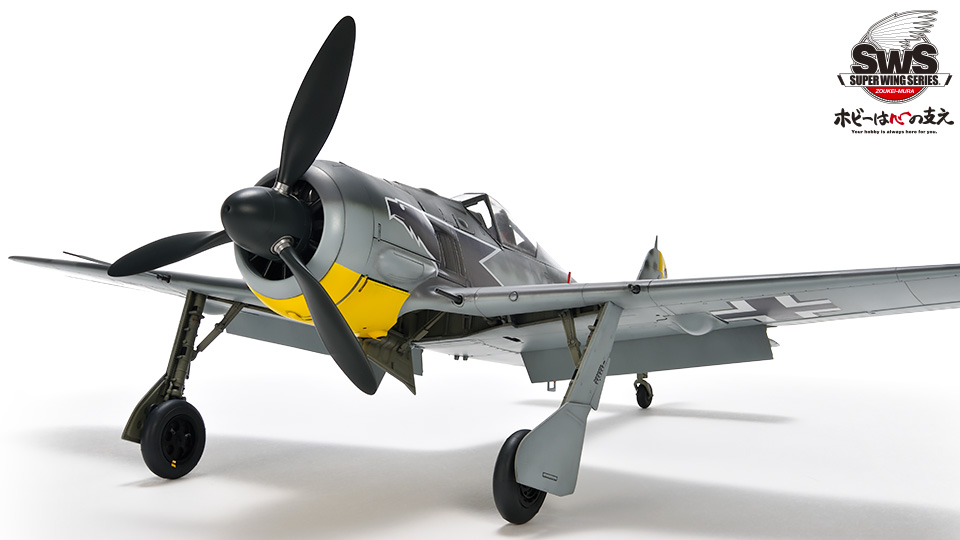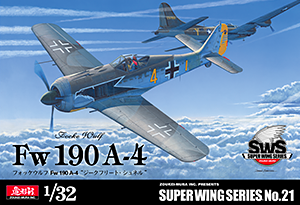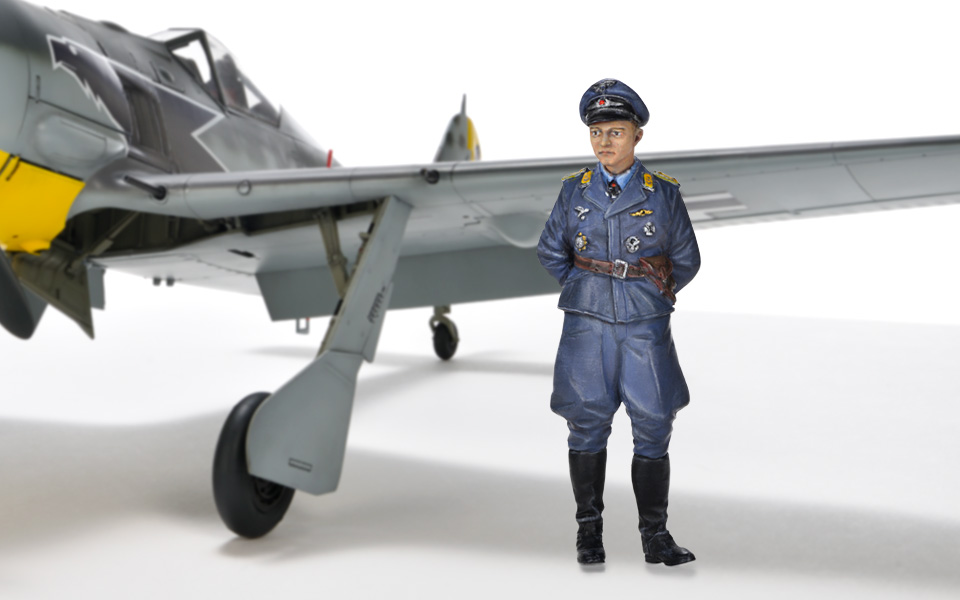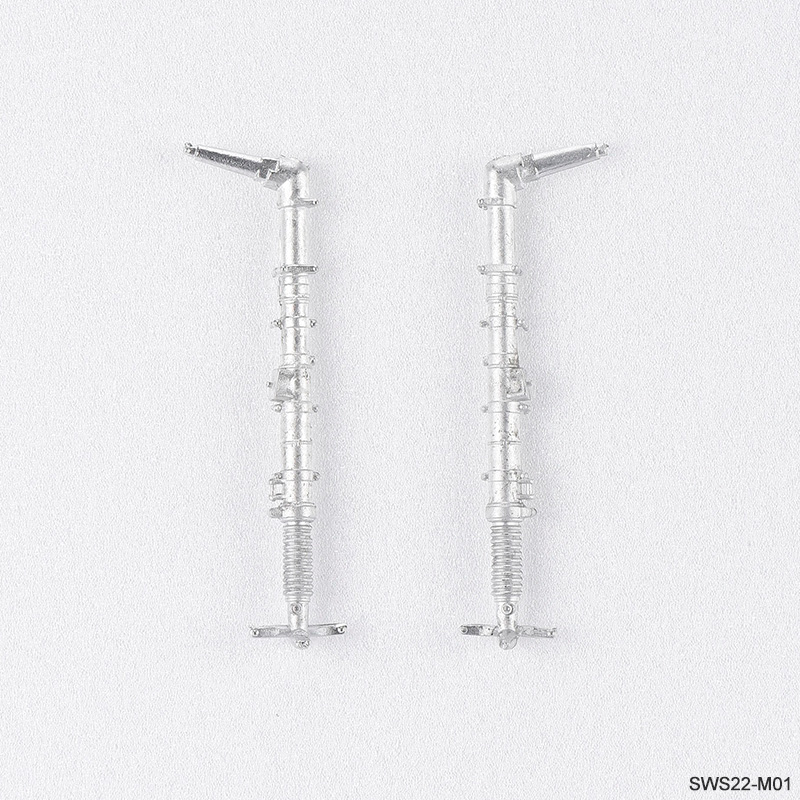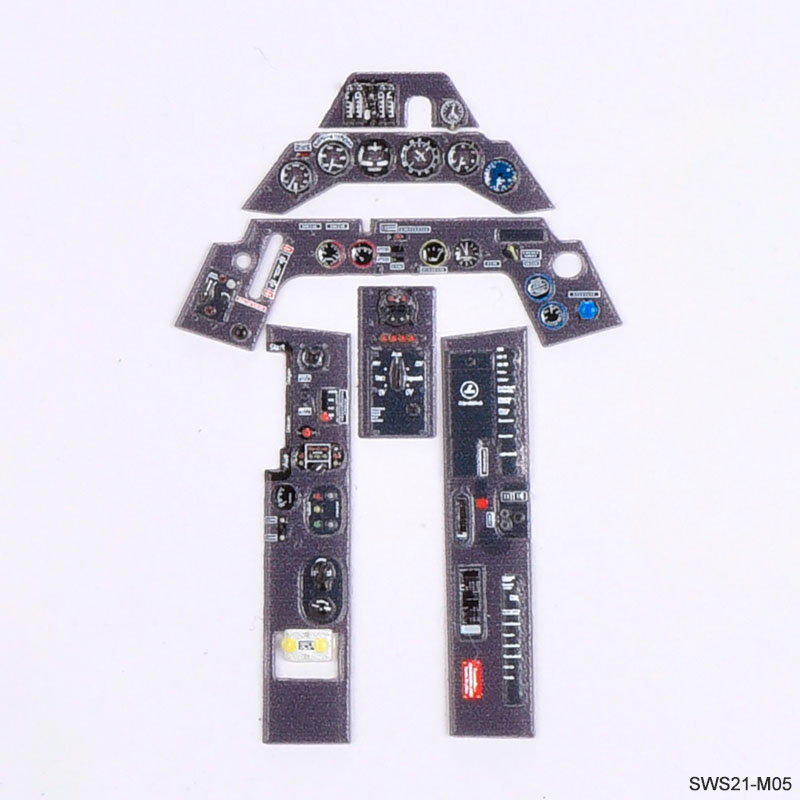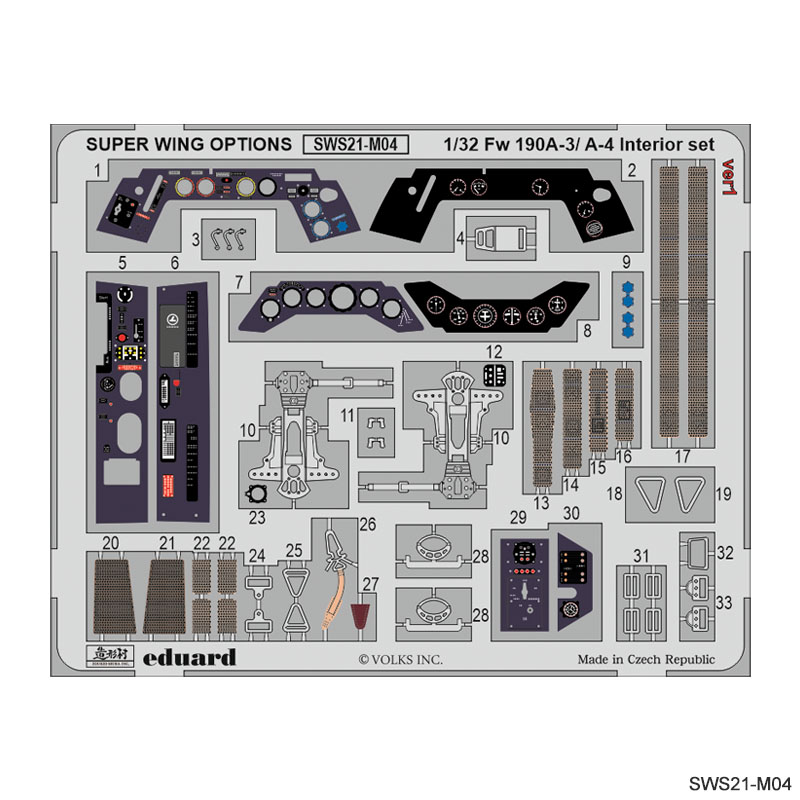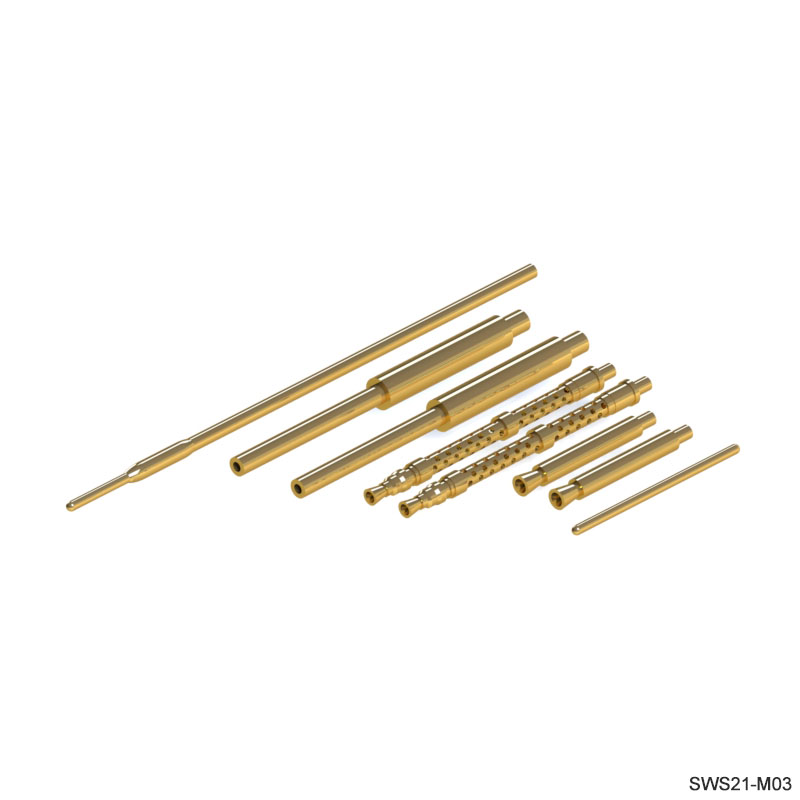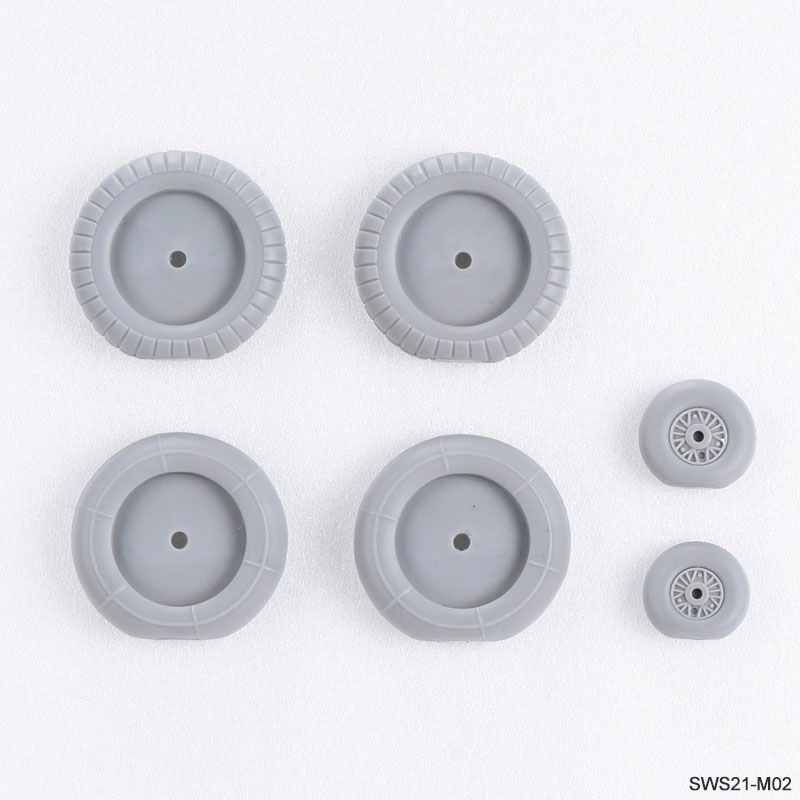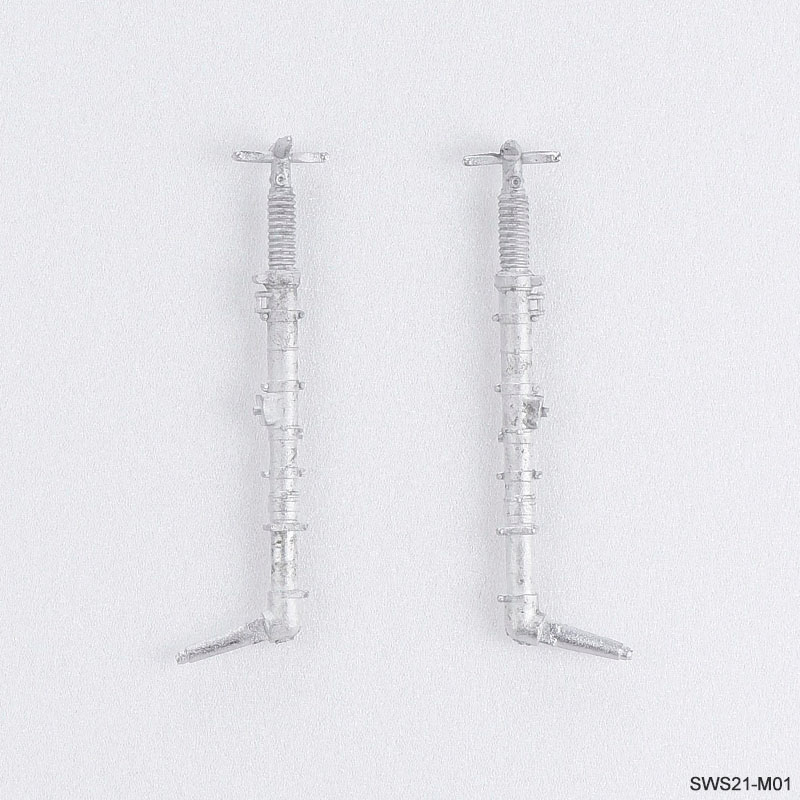- External Shape
-
This masterpiece aircraft of the Second World War was nicknamed Würger (Shrike).
The true form of the Fw 190 is here in its full glory.
The Fw 190 was one of the main Luftwaffe single-seat fighters during the Second World War, developed under Dr. Kurt Tank’s design philosophy that "a fighter plane should be a warhorse, not a racehorse.” The A-4, in particular, is representative for the early-type silhouette before the engine mount was extended. Dr. Tank mitigated the disadvantages of air-cooled engines, which have a large frontal area and high aerodynamic drag, by narrowing the cowling diameter as much as possible and reduced the frontal area by mounting the oil cooler and oil tank in front of the engine. Furthermore, the performance of the high output air-cooled engine was maximized by employing the thrust from the exhaust pipes to gain speed. Note the exquisite surface shape that blends the subtly changing nose with the side of the fuselage creating the overall form of this spartan and robust German aircraft.
- Engine
-
The pioneer of engine control for fighter aircraft.
What is the "BMW 801" engine with command device?
The SWS kit reproduces in detail not only the push-pull rods and baffle plates, but also the "Command Device," a comprehensive engine handling device. Note the exhaust pipes, which come together in only one location on the underside of the nose section. The engine bearer is mounted on the firewall via a truss-like structure, which distributes the load to the firewall, the main structure of the fuselage, and the wing spar. The way in which the machine guns are mounted on the top of the nose and the shape of the propeller blades, which can be said to be the essence of a piston-engine aircraft, have also been carefully designed.
- Cockpit and Canopy
-
The unique vision of Dr. Tank has been taken into account.
The cockpit of the Fw 190 is compact, yet each piece of equipment is neatly arranged, connecting the pilot to the aircraft. The layout of the instruments, which are well-organized and highly visible, the switches and levers, which are within easy reach, are very rational, and the pilot is well looked after as only Dr. Kurt Tank, who was a pilot and an engineer, could conceive. The canopy slides backward on tapering rails at the edge of the cockpit, so its shape changes when it is open or closed. The headrests feature the larger bulletproof plate type adopted with the A-4 and later models. This kit includes the canopy and headrests corresponding to the open or closed positions. You can choose to place them in open or close positions as you wish. The robust windshield with 50mm front and 30mm side bulletproof glass is also included.
- Siegfried Schnell
-
The top ace aircraft that made a name for itself on the Western Front has been revived in the SWS with the heroic figure of its pilot.
Siegfried Schnell was an ace pilot on the Western Front who spent most of his frontline service with the JG 2 (2nd Fighter Wing) deployed in France. He was assigned to 4./JG 2 just before the outbreak of World War II, and recorded his first victory during the Battle of France in 1940. After the Battle of Britain, he continued to increase his tally and quickly rose to the top of JG2. When the unit converted to the new Fw 190 A and gained superiority over the Spitfire, the pace of his aerial victories accelerated and his number of sorties exceeded 500, with a total of 93 downed aircraft (90 of which were scored on the Western Front, including 12 four-engine heavy bombers). This kit includes a special "Schnell" figure. Note the distinctive JG 2 markings with the eagle design painted on the nose, which was intended to hide soot stains behind the exhausts. It will be fun to display this figure next to the fuselage and recreate a scene of that time.
*The kit includes the following two version decals.
- Decal No.1
Fw 190 A-4, 9./JG2, “Yellow4”, W.Nr.140746, flown by Hptm. Siegfried Schnell, France, Jan. 1943
- Decal No.2
Fw 190 A-4, Stab.I /JG54, “Chevron - Double Bar”, Russia, Feb.1943



